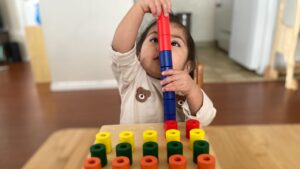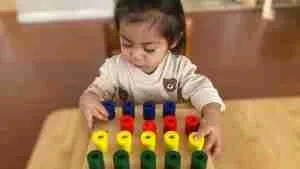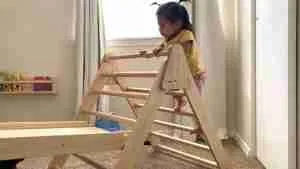
7 Signs Your Baby Is Cold At Night And What To Do
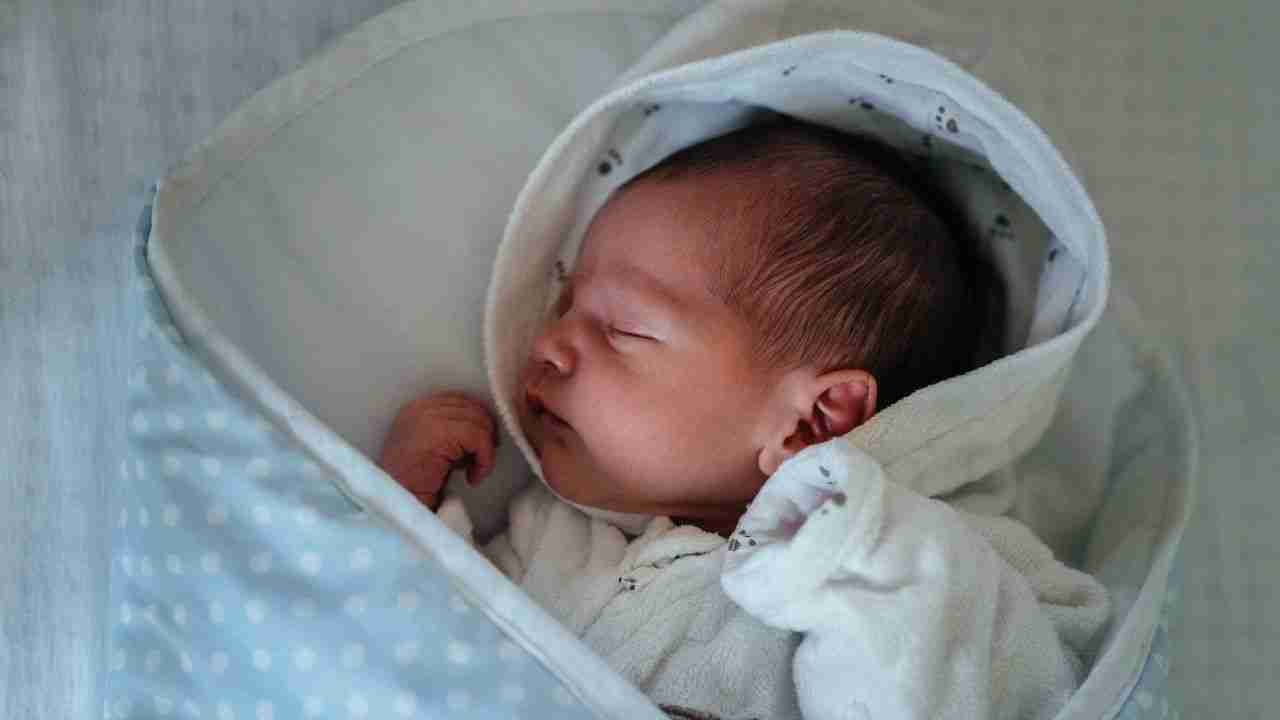
*Disclosure: I only recommend products I would use myself and all opinions expressed here are our own. This post may contain affiliate links that at no additional cost to you, I may earn a small commission. Thank you for your support!
Share this post
Your baby may have trouble sleeping at night when they get too cold.
Some signs your baby is cold at night include cold nose and ears, pale skin, cold hands, shivering, curling into a ball, and flushed cheeks.
We’ve been there before. Those sleepless nights when you wonder if your baby is feeling too cold can be challenging.
We’ve experienced this before and want to help you learn the signs so your baby sleeps comfortably every night.
How do I know if my baby is too cold at night?
Sign | What to do |
Cold nose and ears | Gently touch to see if your baby’s ears and nose are cold. Adjust the room temperature and cover your baby with warm clothes. |
Shivering | A sleep sack can keep your baby warm. |
Pale or bluish lips | Check the color of their lips. Warm your baby and maintain a cozy sleep environment. |
Clenched fists | Observe tightly clenched fists. Dress your baby warmly and provide extra layers. |
Cold hands or feet | Feel for the temperature of their extremities. Ensure your baby’s hands and feet are adequately covered. |
Curling into a ball | Observe their fetal position. Dress your baby in layers and add more bedding if necessary. |
Flushed cheeks | Notice the rosy appearance of their cheeks. Ensure the room temperature is comfortable and avoid overheating. |
Signs your baby is cold at night
Here are some physical signs that your baby might be feeling chilly during the night.
1. Cold nose and ears
When you gently touch your baby’s nose or ears and they feel cold, it’s often a clear indicator that your little one is cold.
Your baby’s body redirects blood away from its ears and nose when they are cold to keep its core warm.
This is a natural survival mechanism because their body needs to keep its vital organs warm like their lungs, heart, and brain.
So pay close attention to these areas because prolonged exposure to cold temperatures can increase the risk of frostbite.
Dress your baby in warm clothes like sleepsuits or sleep sacks to keep them warm.
2. Shivering
Shivering is your baby’s natural response to cold. When your baby shivers, their muscles relax and contract to generate warmth.
Shivering is their way of telling you, “I’m cold, help me stay warm!”
It is a sign that your baby’s body is working hard to regulate its temperature. While it’s a natural response, it’s also an indicator that your baby’s environment may be too cold.
Ensure that your baby is appropriately dressed for the room temperature and has sufficient layers to stay warm.
3. Pale or bluish lips
Your baby may be struggling to maintain a comfortable body temperature if you notice that their lips are paler than usual or have a bluish tint.
Their lips will turn bluish or pale because blood flow and oxygen levels are reduced in response to the cold.
So make sure that you warm your baby up when you observe this sign to prevent further discomfort.
4. Clenched fists
We never thought our baby was clenching her fists because she was cold. Little did we know that this was a sign that she was a bit chilly.
It’s an instinctive reaction to cold as their body tries to keep the warm blood flowing to the vital organs, primarily the heart and brain.
5. Cold hands or feet
It’s quite common for your baby’s hands and feet to feel cold, especially if they’re not adequately covered or if the room temperature is too low.
The hands and feet tend to lose heat more quickly because your baby’s body prioritizes keeping its core temperature stable.
But if you notice that their hands and feet are colder than usual, you should take immediate action and add more layers to maintain a safe body temperature.
6. Curling into a ball
Just like you curl into a ball when you are cold, your baby will also curl into a fetal position when they get too cold.
This natural response minimizes their body’s exposure to the cold air and helps them conserve body heat.
Trust me, it is cute to watch them curl into a ball, but don’t mistake this position for cuteness. It is a sign that they need a little more warmth.
7. Flushed cheeks
This is actually a good sign to look for. Your baby will flush when they are warming up.
This happens because their body is redirecting blood flow away from the skin’s surface to preserve heat.
And as they start to warm up, blood circulation increases, and you might notice those adorable rosy cheeks.
It’s a reassuring sign that your efforts to keep your baby warm are working. But be careful not to overdo it because you may overheat your baby.
Flushed cheeks are cute, but overheating can be equally uncomfortable for your little one.
Look for these behavioral signs too
Physical signs are important to tell if your baby is cold when they sleep. But also make sure to look for these behavioral signs that show that your baby is feeling a bit cold.
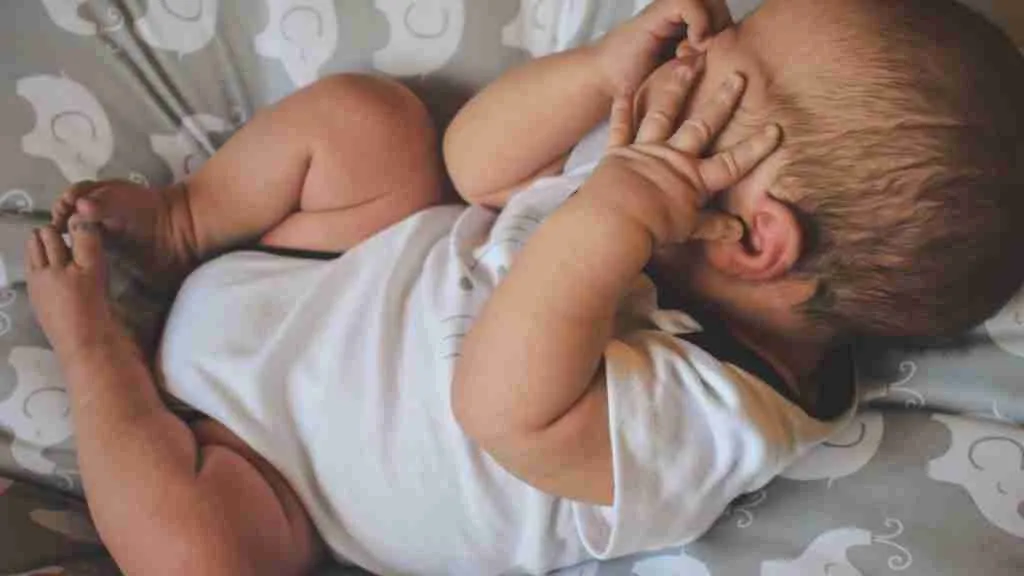
1. Fussiness or crying
One of the most direct ways your baby communicates that they’re feeling cold is through increased fussiness or crying.
Babies use crying as their primary language to tell you their needs, and when they’re cold, they’ll be sure to let you know.
The crying can vary in intensity from mild fussiness to full-blown wailing. Your baby may also show some of the physical signs we described above.
So if you notice your baby is becoming fussier or crying more than usual, check to see if they are cold and provide the right layers to keep them warm.
2. Difficulty sleeping
Don’t you wish your baby could sleep all night?
Some babies do, but many will wake up many times during the night because they are uncomfortable.
Your baby might have trouble falling asleep or staying asleep if they feel cold. They might wake up more frequently during the night, leaving both you and your baby feeling tired and unrested.
Sleep disruptions can be caused by discomfort from the cold, and when your baby can’t find that warm and cozy spot, they’ll naturally have a harder time falling asleep.
3. Restlessness
Restlessness is another behavioral sign that tells you if your baby is cold.
They may toss and turn more than usual and struggle to find a comfortable position. It may result from their body’s attempt to generate warmth or discomfort from the cold environment.
4. Increased breathing rate
A faster breathing rate is your baby’s natural response aimed at generating warmth.
You might notice your baby’s chest rising and falling more rapidly than usual when they’re feeling chilly.
This is because their bodies are working hard to maintain a comfortable temperature.
It is not a cause for alarm but you should provide the right clothing so your baby can breathe and sleep comfortably.
Why babies get cold at night
There are several reasons why your baby might feel cold during the night. These factors will help you create a warm and comfortable sleep environment.
1. Room temperature
The room temperature can drop during the night, and this can catch you and your baby off guard.
The ideal room temperatures for your baby’s comfort typically range from 68-72°F (20-22°C).
If it’s too cold, your little one is more likely to feel the chill. Going below this range can make your baby more susceptible to the cold.
We recommend that you buy a room thermometer to ensure you maintain the right temperature throughout the night.
2. Inadequate sleepwear
Keeping your baby warm is all about providing the right sleepwear. Not enough layers can leave your baby exposed to the cold.
You should dress your baby in comfortable sleepwear that is suitable for the room temperature and this usually involves dressing your baby in layers.
This way, you can easily add or remove layers depending on how your baby feels.
A good rule of thumb you can follow is to dress your baby in one more layer than you would wear in the same environment.
3. Wet diapers
Wet diapers can be another reason why your baby is feeling cold.
Just like if you wear wet clothes, wet diapers conduct heat away from the body and can lower your baby’s body temperature.
We always checked to see if our daughter had a wet diaper, which most of the time she did so we changed it immediately.
This simple step significantly improved her comfort during the night.
4. Poor air circulation
Poor air circulation in your baby’s room can also contribute to uneven temperatures.
During the cold months, warmer air gets trapped near the ceiling because the density of warm air is lower compared to cold air.
This means that your baby will be surrounded by colder air. You can use a fan to distribute air evenly throughout the room.
What to do next?
These are some signs your baby is cold at night. Your baby’s hands may get cold when they sleep and this can be a good indicator that they are feeling chilly.
Make sure to monitor your baby’s temperature so they get a restful sleep because when they sleep, you sleep.

Hello, I am Leslie. I am on a mission to help you support the growth and development of your child. With the right tools and proper guidance, you can navigate parenthood with confidence and assertion! My goal is to equip you with knowledge to help you construct a strong foundation for your child’s life.
Suggested articles
You May Also Like
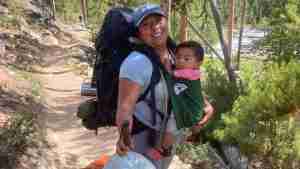
7 Best Stroller Alternatives For All Occasions
We researched and tested various stroller alternatives to bring you a comprehensive list of options that are compact, lightweight, and excellent when you are on the go.

5 Developmental Benefits Of Black And White Cards For Infants
Black and white cards for infants stimulate the development of you newborn’s optic nerves. Black and white care are easy for infants to focus on.
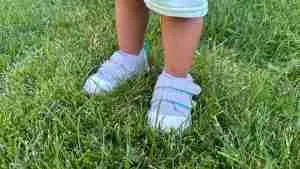
Ten Little First Walkers: The Best Shoes For Early Walkers
The Ten Little First Walkers have a wide toe box, flat and flexible soles, and approved by APMA.



